
Jack Seki, the traditional sensei who taught me Japanese jujitsu, never gave his students a separate term for each block they learned. For Seki, blocking was an integral part of any jujitsu technique that involved stopping or deflecting an attack before countering. Rather than it being a distinct movement, the block was just a step you took so you could protect yourself long enough to get to the attacker and deal with him.
There were only two terms Seki used: te no tatake for blocking a hand technique and juji for blocking an overhead strike or a kick. That was it.
Some jujitsu ryu and most karate ryu typically have 10 or 12 distinct names for blocks delivered at specific angles or elevations, and teachers devote lots of class time to conveying the proper terminology and the associated execution. But for Seki, all that was irrelevant. A block was just a motion you made as you moved in to continue your defense. It either worked or you got hit. Done!
Guidelines
According to Seki, a block executed while doing a complete jujitsu technique has one of two purposes. First, it can deflect the attack so the incoming weapon travels 2 to 4 inches to the side of its target, which is usually your head or torso. Second, it can stop the forward motion of the attack completely, which is sometimes called a hard block.
Most overhead blows, kicks, and roundhouse or backhand strikes require a hard block because of their greater momentum and potentially greater impact. Most martial artists effect their hard blocks at 90 degrees to the attack’s trajectory because that’s the angle at which they’re most effective. Here are some common examples of this hard methodology:
• You block an overhead strike with a club by making contact with a part of the limb that’s between the mid-forearm and the elbow.
هذه القصة مأخوذة من طبعة June/July 2021 من Black Belt.
ابدأ النسخة التجريبية المجانية من Magzter GOLD لمدة 7 أيام للوصول إلى آلاف القصص المتميزة المنسقة وأكثر من 9,000 مجلة وصحيفة.
بالفعل مشترك ? تسجيل الدخول
هذه القصة مأخوذة من طبعة June/July 2021 من Black Belt.
ابدأ النسخة التجريبية المجانية من Magzter GOLD لمدة 7 أيام للوصول إلى آلاف القصص المتميزة المنسقة وأكثر من 9,000 مجلة وصحيفة.
بالفعل مشترك? تسجيل الدخول
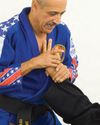
HOW TO CREATE A MARTIAL ART CASE STUDY: COMBAT HAPKIDO
On October 22, 2022, the International Combat Hapkido Federation celebrated its 30th anniversary. As you might expect, we're proud of our organization's longevity, stability and success.
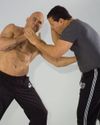
MARTIAL ARTS ANATOMY 101
PHYSIOLOGY OF THE LIVER SHO
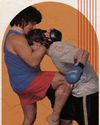
LOCK UP
THE CLINCHING LESSONS TAUGHT IN THE ANCIENT GREEK MARTIAL ART OF PANKRATION ARE STILL RELEVANT - AND EFFECTIVE!

KILLER CHARACTER ACTOR
When Scott Adkins Isn't Headlining His Own Action Movies Like \"Boyka: Undisputed,\" He's Stealing Scenes in Blockbusters Like \"John Wick\" and \"Ip Man\"!
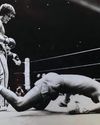
A DEEP DIVE WITH BENNY URQUIDEZ
Few fighters have a reputation as formidable and a record as impressive as Benny “The Jet” Urquidez. As you will see, his path from the traditional martial arts to full contact and then to kickboxing had more than its share of bumps.

PRE-EMPTIVE STRIKES: THE GOOD, THE BAD AND THE UGLY, PART 1
In my six previous columns, pre-emptive striking featured prominently.

THE DAY JUJITSU DIED
Let us look at one historical instance that illuminates a lesson in task saturation, or what Miyamoto Musashi called \"sword flowers.\"

WHERE ARE THEY NOW? GUY MEZGER: FROM MMA FIGHTER TO HEALER
To be successful in mixed martial arts nowadays, you need an all-around game.

KILLER INSTINCT
It's not the size of the woman in the fight but the size of the fight in the woman.
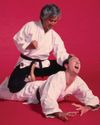
HAPKIDO'S BONG SOO HAN: THE MAKING OF A MARTIAL ARTS LEGEND
Much has been written about Bong Soo Han (1933-2007), his career as a hapkido master and his connection to the Billy Jack films.